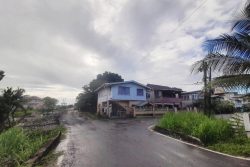Dear Editor,
Reference is made to “Singh meets US EXIM officials, no word yet on key gas to energy $$” (SN Sep 8). The Guyana application, as reported, is for US$660M. Many Guyanese were querying if this is the total amount of money for the entire project – gas to shore, shore to plant, construction of the power station, and power station to electricity or transmission lines. The media and or government should educate the public.
It seems that the US$660M is only to meet the cost for the power plant as the gas to shore pipes were paid for by Exxon as a loan to the government (from oil revenues to be paid for by Guyana’s share of revenues). The company, Lindsayca-CH4, that is building the power plant, signed a US$759M contract in 2022. That company, as reported in SN last week, is in mediation with government over an additional US$50M that will be a total of US$809 for the plant alone.
Vice President Bharrat Jagdeo reported a year ago that government spent US$100M on the project. Since then, an additional US$100M was spent as budgeted by the government in budgets 2022, 2023. In addition, it is understood that GPL also paid for transformers, turbines, switch gears, and a few other gadgets. So the company will have to pay only for the alternator, control gear, control room, the building foundation, and the building — $759 plus $50 or a total of US$809M – not for the entire plant as thought. Was that stated in the contract?
The estimated cost of plant when it was conceived three years ago by the VP was US$285M inclusive of everything – plant, turbine, transformers, switch gears, transmission, lines, compensation for land, etc. We were told electricity would be $.07 KW. The plant alone is now US$809M. And if the US$200M that is spent by government is added, that is a total of over US$1B. The plant alone is over 300% the estimated cost for the total project. And there may be cost overruns that will take it way past the US$1.2B since the project is running a year behind.
When one adds the other costs like gas to shore running of pipes, maintenance, compensation for land, etc., the total cost may be in excess of US $2.2B for 300 Megawatts. The life of the plant is 20 years. If repayment is made over 20 years, the principal and finance costs would be about US$6B. One has to throw in maintenance costs that will add another US$1B. So US$7 B is spent on 300 MW plant. That is over US$23M for one MW. That works out to about $0.13 a Kilowatt Hour (KWH) only for production or Capex.
One has to add delivery, labour for delivery, billing of customers, security of lines, maintenance, etc. that would add another minimum five cents for a total of minimum 18 cents a KWH. The above does not include cost for the gas which Guyana is getting free (for now); if that cost is factored in, then cost per KWH is higher ($0.20). The gas could be sold at the international market if not used by the electricity company. Currently, GPL is producing at US$0.14; GPL is cheaper than the production cost of this gas to shore project.
Government had promised a 50% reduction for consumers. The latest release from government, as pointed out in SN, is “a reduction in cost for energy” not “halving the price” as originally committed. The numbers above show that gas to energy will not be cheaper; it will cost consumers 40 percent more. This project is heading in the direction of the Skeldon sugar factory.
Gas to shore to energy is not viable under prevailing terms as signed in the contract. Gas to energy is produced cheaper in other countries. Government has to find other companies to construct the plant at a lower cost. In fact, other companies put in bids that would have produced electricity at US$0.09 in contrast with the projected US$0.18 cents. The conceivers and those in charge of the gas to energy project must be held accountable.
The US Exim Bank should not fund the project to save the country wastage of US$660M unless a thorough study by independent experts is conducted on cost/benefit and made available to the public.
Sincerely,
Lincoln Chase





